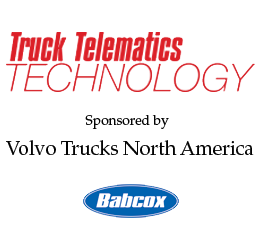
Open-source telematics are impacting legacy all-make, all-model trucks

The truck telematics segment is no longer solely the purview of the latest truck makes and models. Given the evolution of “Big Data” and the proliferation of open-source truck telematics platforms, practically any truck in your fleet is primed to pounce on the power of remote diagnostics.
First, let’s take a step back. When we talk about an “open-source” platform, we mean that the data spilling off of the truck can be collected, communicated and analyzed by any telematics system. Navistar’s OnCommand Connection and Geotab’s GoFleet are the two open-source platforms that spring to mind, and they are both platforms that HDA Truck Pride has partnered with to dig deeper into truck data possibilities. HDA Truck Pride members and independent service providers are authorized resellers for OnCommand Connection and also offer HDA Truck Pride Telematics by GoFleet. The system hardware plugs into the J1939—no hardwiring required—and as long as you can pull a signal to on-board it, you’re in truck telematics business.
So what comes next? Once your system of choice is installed, you’ll start to see fault code alerts coming through your email inbox or text message—prioritized by severity:
- It’s something you should be aware of;
- It’s something that you should address at your next PM;
- It’s something that needs your attention right now.
While the latest makes and models of trucks have the advantage of proprietary data integration to make those recommendations, open-source telematics systems are leveraging years of historical data to provide service guidance for nearly any truck.
“Fault codes—across all makes and models—tend to have similar patterns,” said Tina Alread, HDA Truck Pride’s vice president of marketing. “Today’s data looks at the historical behavior of a truck by make, model and year. Take a low coolant fault code, for example. If it’s a low coolant, we know that truck A—make and model from year to X to Y—tends to throw code when there’s nothing severely wrong. But if the code throws 10 times an hour for five hours, then you have an issue. Or maybe it’s a 2014 truck and it’s only thrown the code 10 times in two days. Then you would need to check it at your next PM. There’s historical logic by make, model and year that has been built into the system to develop fault code action plans.”
Just as Big Data can support your potentially big service decision, the fact that you own your truck’s data, and can share it with anyone, can support your service provider to get the job done more quickly. In HDA Truck Pride’s case, sharing your fault code information by forwarding the alert email you get to any of the network’s more than 400 independent service facilities would jumpstart the service process, allowing your provider to help manage your maintenance process—both planned and unplanned. Regardless of your remote diagnostics platform, you’ll want to ensure that your service network has a deep understanding of your chosen platform.
Though it’s easy to feel isolated with a big pile of Big Data, remember that the power of data comes from its availability and shareability. When it comes to analyzing and acting on truck data, you’re not alone.



 Print
Print
 Email
Email
